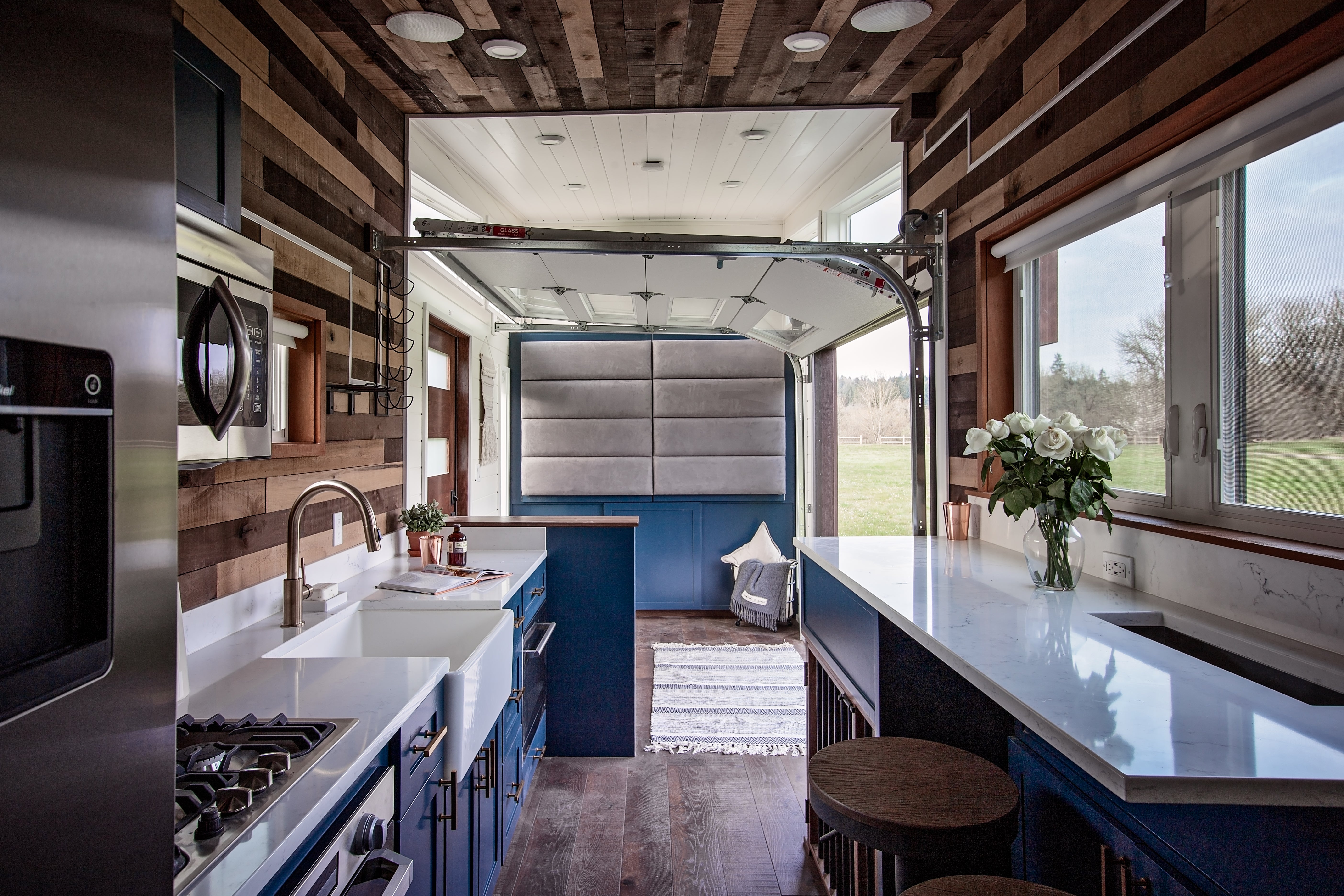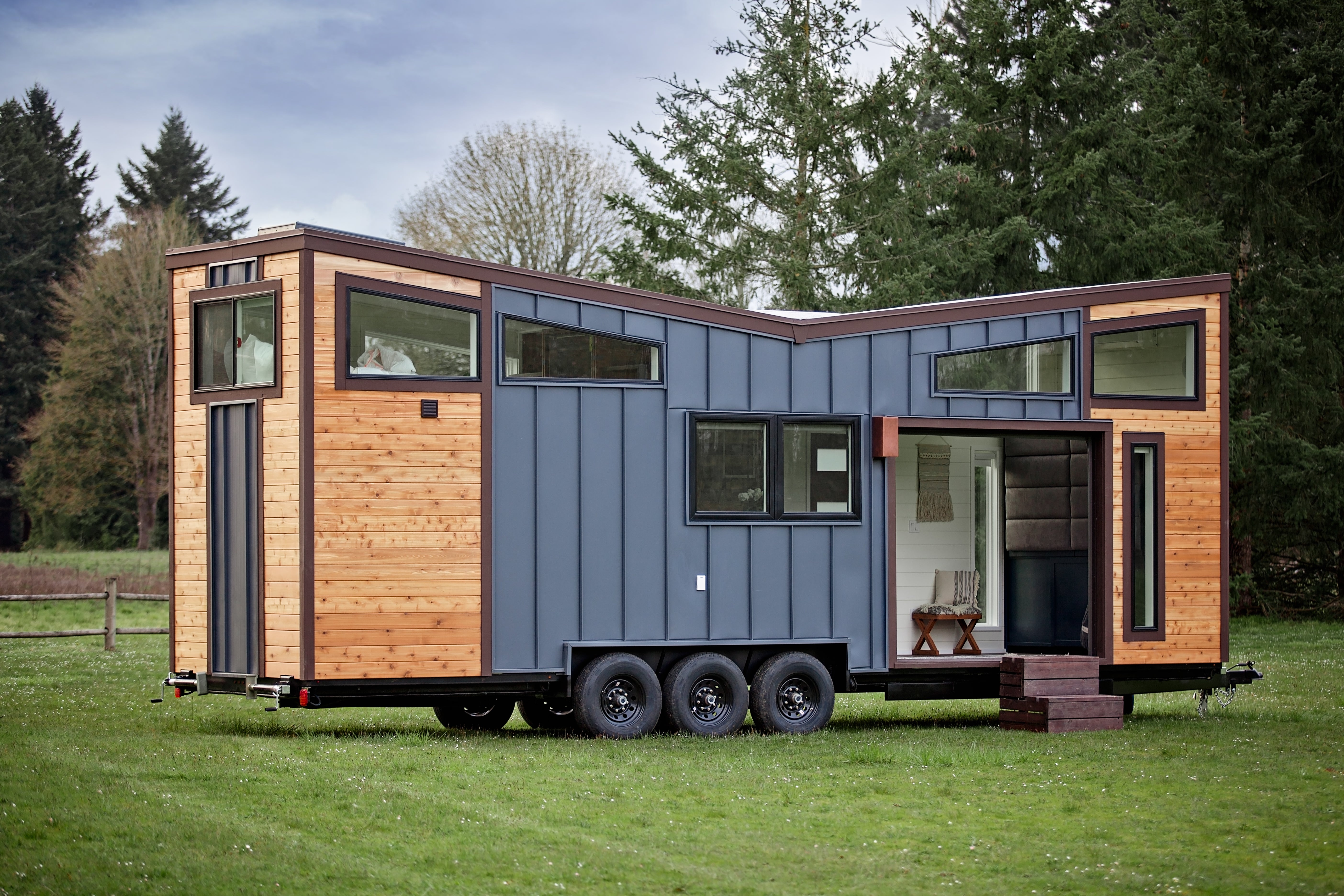Maximize flow with clear zones—entry, lounge, wash-up, sleep—using rugs, hooks, and shelves instead of walls. Keep a center aisle open, align furniture to walls, and mind door swings. Pick multipurpose pieces: a lift-top coffee table, nesting side tables, ottomans with storage, and a sofa sleeper or trundle.
Stash extras on high shelves and label baskets. Add flexible privacy with folding screens and dimmable lighting. Soften sound with wool rugs. There’s more to make tiny hosting feel effortless.
Key Takeaways
-
Define zones for entry, lounge, wash-up, and sleep using rugs, shelves, and hooks to guide flow without walls.
-
Choose multipurpose furniture: sofa sleepers, lift-top coffee tables, nesting tables, and ottomans with storage.
-
Offer flexible sleeping: forward-opening sofa bed, trundle or roll-out deck, plus a folding mattress for extras.
-
Maximize hidden storage with labeled baskets, over-door shelving, and platform steps; declutter before guests arrive.
-
Add privacy and comfort with folding screens or ceiling curtains, wool rugs for sound, and dimmable layered lighting.
Smart Layouts That Maximize Flow
Even in a tiny house, smart layouts start with clear zones and unobstructed paths. Define where guests enter, stash bags, and sit, then protect those routes. Use zoning strategies to separate arrival, lounging, washing up, and sleeping without walls: a rug marks seating, a wall hook frames entry, a slim shelf signals a pause point. Map flow patterns from door to bathroom and bed so guests move without backtracking.
Align furniture along walls to free a center aisle. Keep door swings clear and hinge them to favor circulation. Place lighting to cue zones and prevent shadows in pathways. Anchor the heaviest piece, then layer smaller elements around it. Edit surfaces; leave negative space. Label switches discreetly. Keep sightlines long, corners open, and pathways obvious.

Multipurpose Furniture That Works Overtime
With pathways mapped and zones clear, the pieces you choose should pull double duty. Choose furniture that shifts roles fast and stores more than it shows. Opt for transformable tables that expand for board games, shrink for coffee, and hide stools beneath. Nesting side tables slide together when not in use. A slim console flips into a dining perch, then back to a landing zone.
Pick space saving sofas with rigid arms that act as trays and lift-up seats for blanket storage. Use ottomans with hidden bins and firm tops that stand in as stools or serving platforms. Wall-mounted drop leaves create instant work or snack stations, then disappear. Favor light frames on casters so you can reconfigure in seconds without visual clutter.
Flexible Sleeping Options for Every Guest
Because tiny houses host different sleepers, plan a layered setup that swaps fast and stores clean. Choose convertible beds that shift from lounge to sleep in seconds. Opt for sofa sleepers with supportive cushions and simple mechanisms; prioritize models that open forward to save wall clearance. Add a trundle or roll-out deck for couples or kids, keeping heights low for easy access.
Keep a folding mattress or tri-fold topper for unexpected guests; it doubles as a meditation mat or bench pad. Favor breathable, quick-dry textiles and zip-off covers to reset the space between stays. Use neutral bedding sets that mix and match across sizes. Label pillow firmness so guests pick what they like. Finish with blackout shades and a quiet fan for comfort.
Hidden Storage and Clutter Control
Those flexible sleepers work best when everything else stows fast and out of sight. Build storage into every surface: a lift-top coffee table for bedding, ottomans with bins, and a platform step with drawers. Use creative shelving above doors and windows; keep shelves shallow so they don’t crowd the room. Mount slim hooks inside cabinet doors for cords and toiletry kits. Label baskets, then assign zones: sleep gear, snacks, linens, shoes.
Adopt firm decluttering strategies. Before guests arrive, sweep counters, stash mail, and rotate only multipurpose items forward. Use a rolling caddy as a mobile nightstand, then dock it in a closet. Choose nesting tables, fold-flat luggage racks, and magnetic rails for small metal tools. Everything gets a home, and clutter never lingers.

Privacy Solutions in Open Spaces
Even in a one-room footprint, you can carve quiet zones without building walls. Use flexible room dividers: folding screens, sliding panels, or ceiling-mounted curtains that stack tight when not needed. Choose light-filtering fabrics or slatted wood to keep air and daylight flowing while softening sightlines. Zone the floor with a low rug under a guest cot and a narrow console behind a sofa to signal boundaries without bulk.
Prioritize sound management. Add wool rugs, cork panels, and upholstered benches to dampen echoes. Install door sweeps and felt pads to quiet movement. A compact white-noise unit masks late-night whispers. Place seating back-to-back to redirect conversation. Use dimmable task lights and clip-on reading lamps so guests control glow, maintaining privacy through lighting, not square footage.
Compact Kitchen Setups for Easy Hosting
While square footage is tight, a smart galley or L-shaped micro-kitchen can still power a gathering. Zone it: prep, cook, serve. Keep counters clear; mount rails for utensils and magnetic strips for knives. Choose space saving appliances—an induction cooktop, a combo microwave-convection oven, and an undercounter fridge. Use nesting bowls and folding dish racks. Add portable kitchen islands that roll out for buffet service, then tuck beside cabinetry. Prioritize a deep single sink with a fitted cutting board to extend work surface. Stash a slim cart with glassware and a tray for quick reset. Install dimmable under-cabinet lighting and a quiet vent. Batch-cook in small pans, plate on trays, and circulate food along one path to minimize congestion.
Bathroom Comfort in Minimal Square Footage
Because every inch counts, design the bath to feel calm, clean, and efficient. Choose a wall-mounted sink and compact toilet to free floor space. Use a pocket door or bi-fold to clear swing paths. A corner shower with a clear screen keeps lines open. Stick to minimalist design: one palette, simple fixtures, hidden hardware.
Add space saving solutions that work hard. Mount a shallow medicine cabinet and under-sink drawer for guest toiletries. Install shelves above the door for spare towels, and hooks on the back of the door for robes. Opt for a slim hamper that slides under a bench. Use a single caddy to corral essentials. Place a small bath mat that dries fast. Keep counters empty, labels unified, and cleaning tools within reach.

Lighting, Textiles, and Ambiance Upgrades
Light sets the tone in a tiny guest space, so layer it with intent. Start with ambient lighting that washes walls and ceilings—dimmable LED strips under shelves, a compact paper lantern, or a flush-mount fixture. Add task lights where guests read or unpack: a swivel sconce by the sofa-bed, a clip lamp near a fold-down desk. Finish with a small, warm accent—tealight LED or a pebble lamp—to soften edges.
Choose cozy textiles with purpose. A slim wool throw doubles as a shawl; a reversible quilt adds warmth without bulk. Use two pillow types—one supportive, one soft—and store extras in a zip cube. Ground the space with a low-pile rug for warmth and acoustics. Keep tones calm, textures varied, cords hidden, switches intuitive.
Outdoor Extensions for Extra Room to Gather
After setting a calm glow indoors, push that comfort outward to make your tiny house feel bigger. Start with a compact deck or gravel pad that aligns with your door threshold, so movement stays seamless. Choose foldable patio furniture: a drop-leaf table, stackable chairs, and a slim bench with hidden storage. Anchor the zone with an indoor-outdoor rug sized to your footprint.
Layer outdoor lighting for function and mood—solar path stakes for edges, string lights overhead, and a portable lantern on the table. Add a small propane fire bowl or tabletop heater to extend evening use. Use planters as low dividers to define space without walls. Mount a narrow bar ledge along the railing for extra plates and drinks, keeping surfaces clear.
Conclusion
You don’t need extra square footage to be a great host—you just need intention. Map smart traffic flow, lean on multipurpose pieces, and keep sleep options flexible. Hide clutter fast with built-in storage, carve out privacy with screens or curtains, and streamline the kitchen and bath for easy use.
Layer lighting and soft textiles for instant warmth. When weather cooperates, spill outside. Edit ruthlessly, reset quickly, and your tiny home will welcome guests with calm, comfortable efficiency.






Share: